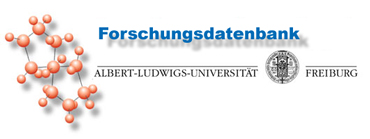| [Zurück zum Forschungsbericht] |
 |

Emmy Noether-Group for Stem Cell Biology
Projektbeschreibung:Our lab is interested in unraveling the mechanisms governing growth and differentiation in the developing nervous system. Our current focus is the identification of cell-contact- as well as diffusible factor-mediated determinants of neural lineage specification. We utilize human pluripotent stem cells (embryonic stem cells and induced pluripotent stem cells) as the chief model system, complemented with primary neural cell cultures, tumor cell lines and transgenic mouse model systems. Important techniques include a number of cell and tissue culture-based assays, state-of-the-art molecular and cell biology, flow cytometry and FACS, histological analysis and microscopy. What drives our work is the desire to uncover fundamental mechanisms of mammalian (human) neural lineage specification and morphogenesis. Despite fantastic progress in neurobiology, genetics and developmental biology over the past decade, we are currently unable to direct stem cell development in vitro in a fully predictable manner. While we have learned plenty about many players in the gene regulatory networks underlying development, we are still unaware of the extrinsic cues guing neural tissue morphogenesis and spatially appropriate patterning. In consequence, we set out to elucidate the mechanisms of reciprocal cell interactions during neural development. The goal of our work is to enhance present knowledge of lineage specification and cell-cell interactions in human neural development. Our current focus is the identification of cell-contact- as well as diffusible factor-mediated determinants of neural lineage specification. We utilize human pluripotent stem cells (embryonic stem cells and induced pluripotent stem cells) as the chief model system, complemented with primary neural cell cultures, tumor cell lines and transgenic mouse model systems. Important techniques include a number of cell and tissue culture-based assays, state-of-the-art molecular and cell biology, flow cytometry and FACS, histological analysis and microscopy. Pluripotent stem cells: Human pluripotent stem cells offer the unprecedented opportunity to study basic principles of development and embryology in a human model system. This lends itself to study self-renewal and cell proliferation on the one hand, and cell fate establishment and stabilization on the other. http://dx.doi.org/10.1007/978-1-4614-8066-2_4 Human pluripotent stem cells (hPSCs) represent a valuable system to study cellular processes and disease mechanisms in phenotypes of biomedical interest and to derive cells and tissues for regenerative medicine and cell therapy. Neural differentiation of human stem cells represents a promising avenue to derive specific neuronal and glial phenotypes for potential cell replacement in the therapy of nervous system disease. Among others, therapies are being investigated for degenerative neurological disorders such as Parkinson’s and Huntington’s disease, for glial disorders such as multiple sclerosis or for trauma conditions such as spinal cord injury. PSCs are, in principle, unlimited in their expansion potential and represent an epigenetically “blank slate” that enables directed patterning toward all lineages. Importantly, the differentiation of human neural cell types from human pluripotent stem cells enables the study of neural development in an understudied model organism to date only remotely accessible to biological discovery: humans. Neural differentiation of hPSCs: Exemplifying the feasibility of using hPSCs for developmental studies, we hypothesized that factors known to neuralize tissue in embryological development could be exploited to guide PSCs toward neural fate. Indeed, we were able to induce neural differentiation by the application of the BMP antagonist Noggin, and thereby greatly enhance neuralization (here: typical neuroepithelial rosettes) as well as differentiation toward functional neurons in a dose and time-dependent manner. This illustrated that, in principle, basic aspects of neural development do apply to hPSC in vitro systems. mod. from: Pruszak & Isacson, Adv Exp Med Biol 2009 Ongoing projects in the lab aim at elucidating the role of specific integrin heterodimers in the critical transition from neural stem cell to neuroblast. In this context we aim to understand the role of environment-dependent signaling pathways that control proliferation versus differentiation in the neural stem cell niche. For example, Hippo pathway components, involved in organ size regulation and cancer, have recently become a focus of study in a range of stem cell systems, but little is known about its function in mammalian neural development and its interplay with other signaling pathways. Enhanced understanding of how neural cell numbers are controlled during brain development may enable us to better control and therapeutically exploit human neural stem cell systems in the future.Projektlaufzeit:
Ansprechpartner: Dr. Jan Pruszak
Tel: 0716/203-5121
Email: jan.pruszak@anat.uni-freiburg.de
Projektbeginn: 2010Projektleitung:
Projektende: (unbegrenzt)
Pruszak JAktueller Forschungsbericht
Albert-Ludwigs-Universität Freiburg
Institut für Anatomie und Zellbiologie
Abteilung Molekulare Embryologie
Albertstr. 17
79104 Freiburg i. Br.
Telefon: ++49-761/203- 5087
Fax: ++49-761/203-5091
https://www.anatomie2.uni-freiburg.de